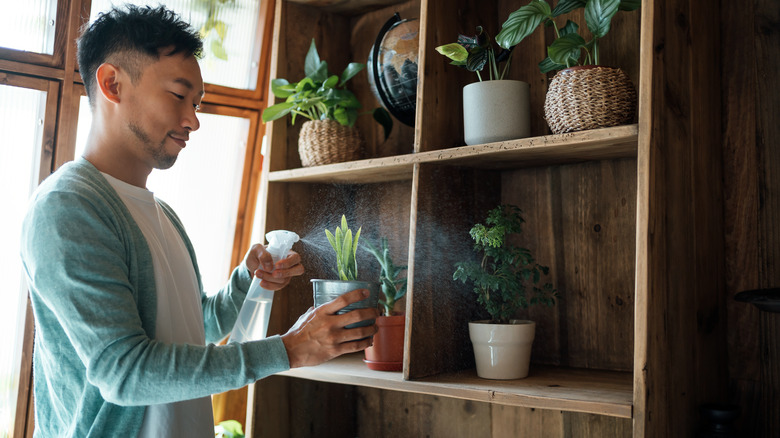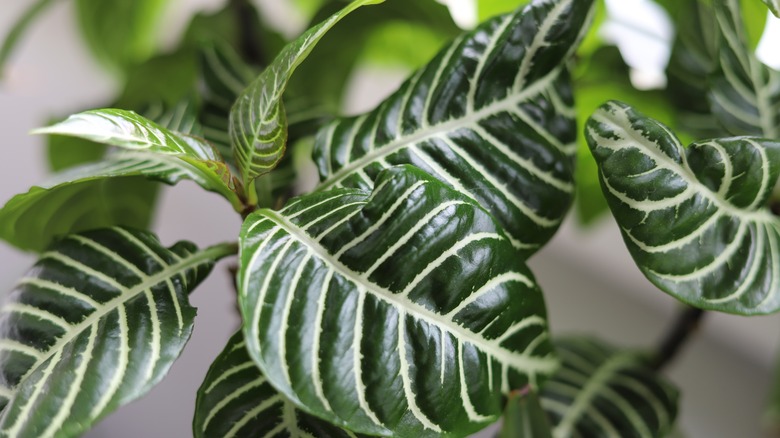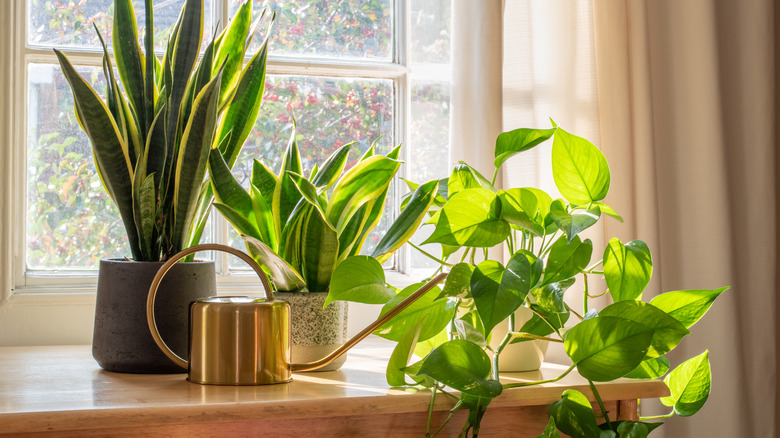If You Don't Have A Green Thumb, You May Want To Avoid Growing This Plant Indoors
Houseplants can be a joy that brings life and greenery into your home regardless of the time of year. Some houseplants are far more challenging to care for than others, though, and are best left to only the most experienced indoor gardeners. Despite its beauty, the elegant zebra plant is one such houseplant, and novice growers may want to pass on it in favor of more easygoing options. Zebra plants are notoriously challenging due to their very specific light and humidity needs.
Zebra plants (Aphelandra squarrosa) are native to Brazil and are only hardy in USDA zones 11 and 12. Because they need such warm temperatures, zebra plants are confined to being houseplants in most of the United States. When kept as houseplants, they generally don't grow over a foot tall, but in their native habitat, zebra plants can easily reach over 5 feet tall and wide. When conditions are right, zebra plants produce stunning yellow flowers that beautifully complement their striped green leaves. Unfortunately, these beauties can be a challenge to keep alive and gardeners need to be confident in their skills before growing or planting a zebra plant.
Lighting and humidity for zebra plants
In their native habitat, zebra plants live in the understory of rainforests and receive dappled and indirect sunlight. Recreating these lighting conditions in your home can be challenging but not impossible. The best way to provide zebra plants with the indirect but bright light they need is often through a combination of natural light from windows and artificial light. Be aware that south-facing windows may be too intense, though. The University of Arkansas Division of Agriculture advises providing zebra plants with about 650 foot-candles of light to promote flowering. This equates to almost 7000 lumens.
Zebra plants also require high humidity to thrive and need acidic soil that remains consistently moist. The North Carolina State Cooperative Extension suggests growing zebra plants in bathrooms or in a pot on top of a container of water and pebbles to ensure sufficient humidity. In addition to their lighting and humidity needs, zebra plants require temperatures above 65 degrees Fahrenheit year-round.
Alternatives to zebra plants
If zebra plants are a bit above your skill level for now, don't despair. There are many gorgeous houseplants that anyone can keep alive. Houseplant lovers who admire the beautiful striped leaves of the zebra plant but want something more forgiving may want to consider snake plants (Dracaena trifasciata). Many cultivars, including Bantel's Sensation, feature unusual and beautiful patterns on the leaves. Snake plants are succulents and thrive in dry, low-light conditions. As long as you provide them with well-draining soil and don't overwater them, your snake plants can thrive with little additional care.
If you're drawn to zebra plants for their large and broad leaves, then perhaps pothos (Epipremnum aureum) would be an appealing alternative. Pothos plants have heart-shaped leaves and grow well in east or west-facing windows. As long as you plant them in well-draining soil with plenty of organic material and keep them from drying out, pothos can grow quickly. While pothos thrive in high humidity and temperatures between 70 and 90 Fahrenheit, they do not require these conditions and are far more adaptable than zebra plants.


